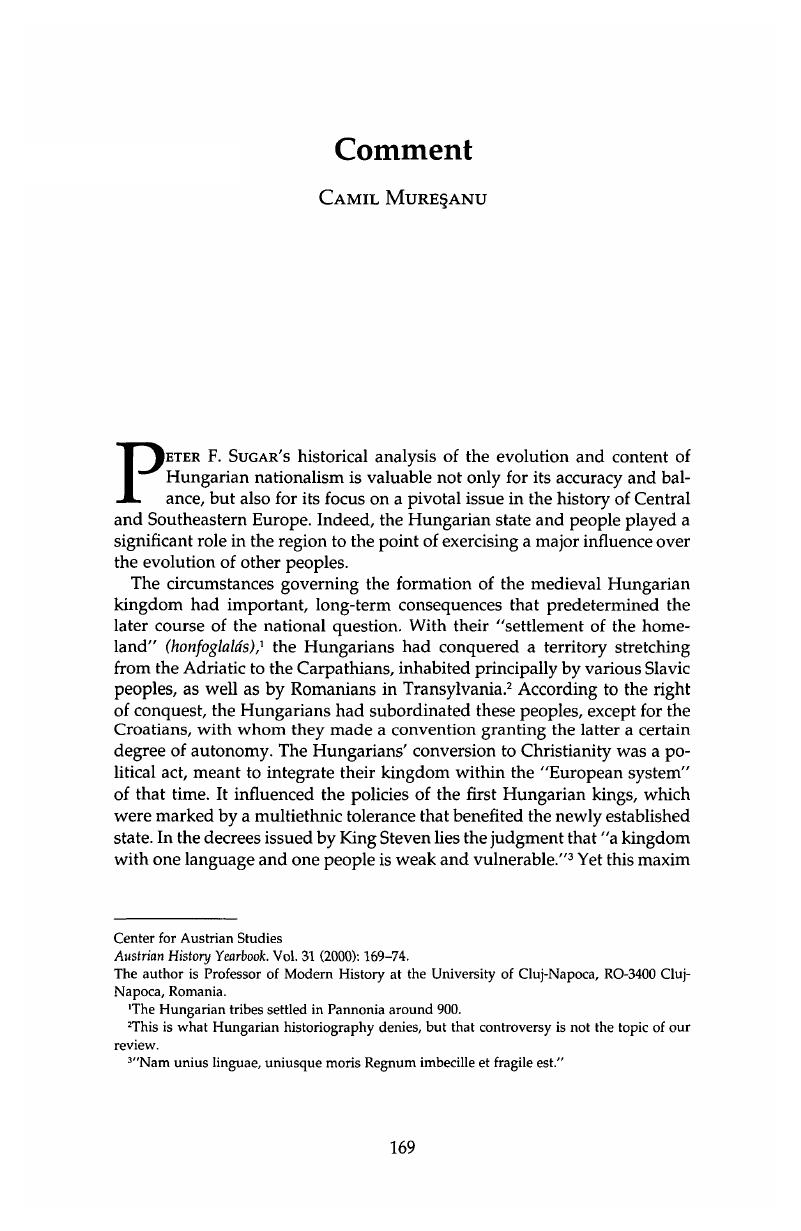No CrossRef data available.
Published online by Cambridge University Press: 10 February 2009

1 The Hungarian tribes settled in Pannonia around 900.
2 This is what Hungarian historiography denies, but that controversy is not the topic of our review.
3 “Nam unius linguae, uniusque moris Regnum imbecille et fragile est.”
4 From Sándor, Petőfi's poem, “Élet vagy halál” (Life or death), written on September 30, 1848.Google Scholar
5 Transylvania's unification with Hungary was persistently required by the Hungarian revolutionaries. Simion, Barnuţiu's Discursul tinut in catedrala din Blaj la 2/14 mai 1848 (The speech delivered in the Blaj cathedral on May 2/14, 1848) (Bucharest, 1909), 148.Google Scholar
6 Pascu, E., Un plan de confédération danubienne roumano-magyaro-serbe en 1859 (Bucharest, 1940), 4.Google Scholar